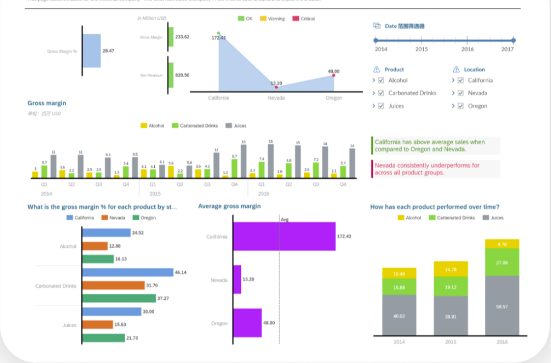What is Enterprise Spend Management Platform
An Enterprise Spend Management Platform empowers enterprise organizations to efficiently manage their spending, procurement, and financial processes while enhancing cost control, vendor management, and compliance.
It ultimately leads to cost savings, improved vendor relationships, and effective resource allocation.
Enterprise Spend Management Platform Features
How to use Enterprise Spend Platform
- Expenditure Tracking and Categorization
- Track all company expenditures in the 'Expenditure Tracking' module.
- Categorize spending into relevant categories for easier management and analysis.
- Budget Planning and Allocation
- Create and manage budgets for different departments or projects in the 'Budgeting' section.
- Allocate funds and set spending limits based on strategic priorities.
- Procurement Process Management
- Manage the procurement process from vendor selection to purchase in the 'Procurement' module.
- Ensure adherence to procurement policies and cost-effectiveness.
- Invoice Processing and Payment
- Automate invoice processing and payments in the 'Accounts Payable' section.
- Track invoice statuses, due dates, and ensure timely payments.
- Contract Management
- Store and manage contracts with suppliers and service providers in the 'Contract Management' module.
- Monitor contract terms, renewal dates, and compliance.
- Supplier Relationship Management
- Manage interactions with suppliers in the 'Supplier Management' section.
- Evaluate supplier performance and negotiate better terms.
- Expense Reporting and Reimbursement
- Facilitate expense reporting for employees in the 'Expense Reporting' feature.
- Streamline the reimbursement process for approved expenses.
- Policy Compliance and Audits
- Ensure spending compliance with company policies and regulatory requirements.
- Prepare for audits with comprehensive spending records and reports.
- Reporting and Analytics
- Generate detailed reports on spending patterns, budget performance, and cost-saving opportunities.
- Use analytics for strategic decision-making and financial planning.
- Integration with Financial Systems
- Integrate with existing financial systems like ERP, accounting software, and HR systems.
- Ensure seamless data flow and consolidated financial management.
- User Access and Security Controls
- Manage user access permissions to safeguard sensitive financial data.
- Implement robust security protocols to protect financial information.
Enterprise Spend Platform is Designed For:
Related Enterprise Software
What is Next?
- Get help building your app: Request a demo and we'll install this application to your trial Kohezion account.






Frequently Asked Questions
An Enterprise Spend Management Platform empowers enterprise organizations to efficiently manage their spending, procurement, and financial processes while enhancing cost control, vendor management, and compliance.
It ultimately leads to cost savings, improved vendor relationships, and effective resource allocation.
- Expenditure Tracking and Categorization
- Track all company expenditures in the 'Expenditure Tracking' module.
- Categorize spending into relevant categories for easier management and analysis.
- Budget Planning and Allocation
- Create and manage budgets for different departments or projects in the 'Budgeting' section.
- Allocate funds and set spending limits based on strategic priorities.
- Procurement Process Management
- Manage the procurement process from vendor selection to purchase in the 'Procurement' module.
- Ensure adherence to procurement policies and cost-effectiveness.
- Invoice Processing and Payment
- Automate invoice processing and payments in the 'Accounts Payable' section.
- Track invoice statuses, due dates, and ensure timely payments.
- Contract Management
- Store and manage contracts with suppliers and service providers in the 'Contract Management' module.
- Monitor contract terms, renewal dates, and compliance.
- Supplier Relationship Management
- Manage interactions with suppliers in the 'Supplier Management' section.
- Evaluate supplier performance and negotiate better terms.
- Expense Reporting and Reimbursement
- Facilitate expense reporting for employees in the 'Expense Reporting' feature.
- Streamline the reimbursement process for approved expenses.
- Policy Compliance and Audits
- Ensure spending compliance with company policies and regulatory requirements.
- Prepare for audits with comprehensive spending records and reports.
- Reporting and Analytics
- Generate detailed reports on spending patterns, budget performance, and cost-saving opportunities.
- Use analytics for strategic decision-making and financial planning.
- Integration with Financial Systems
- Integrate with existing financial systems like ERP, accounting software, and HR systems.
- Ensure seamless data flow and consolidated financial management.
- User Access and Security Controls
- Manage user access permissions to safeguard sensitive financial data.
- Implement robust security protocols to protect financial information.

